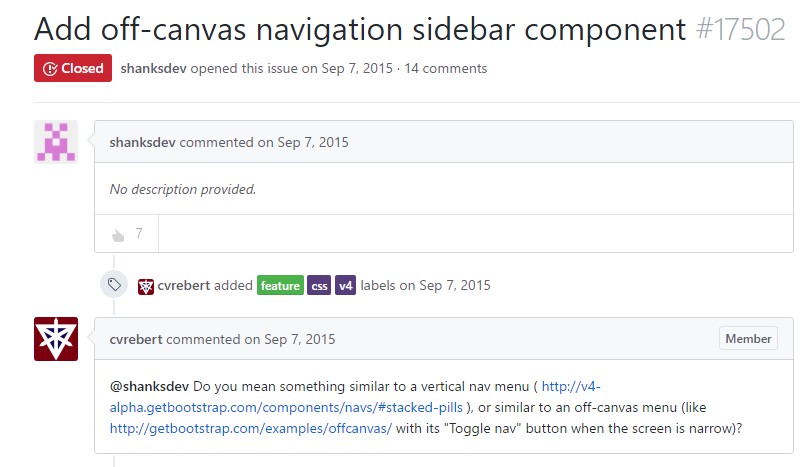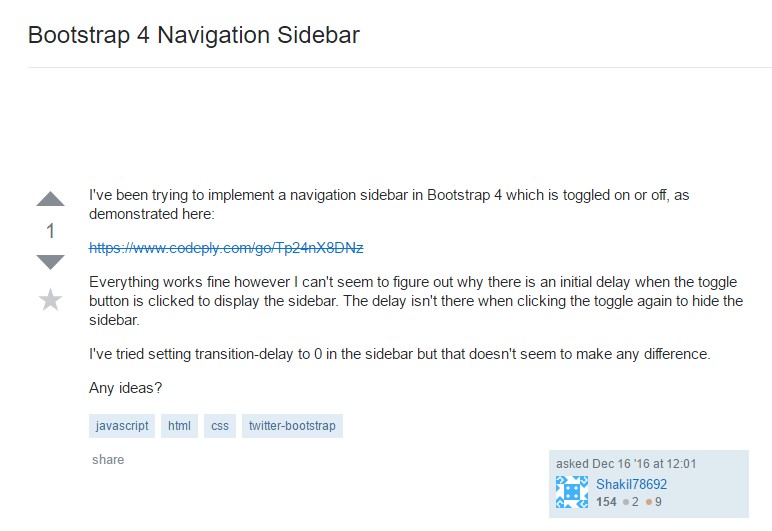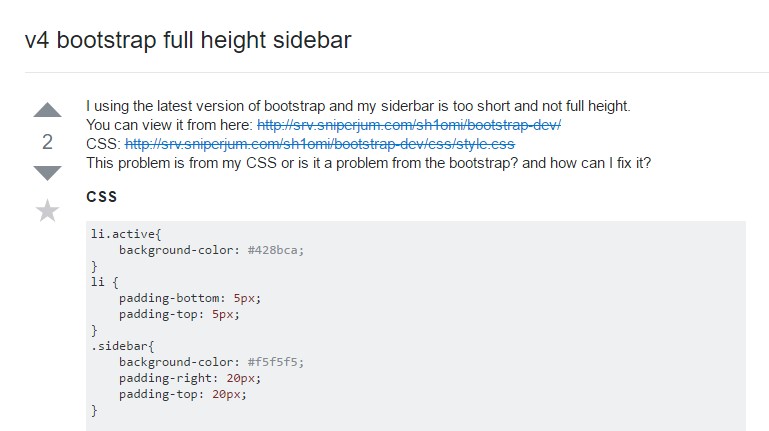Bootstrap Sidebar Content
Introduction
Throughout the most of the webpages we just recently spot the content escalates from edge to edge in size with a handy navigating bar just above and simply efficiently becomes resized when the determined viewport is reached and so practically the showcased content fluently uses the whole entire width of the web page accessible. Even so at a particular events the wanted target the pages must work in require along with the fluently resizing content area an additional component of the obtainable screen width to get selected to a still vertical element together with several urls and web content inside it-- in shorts-- the prominent from the past Bootstrap Sidebar Submenu is required.
Efficient ways to work with the Bootstrap Sidebar Menu:
This is somewhat outdated strategy however assuming that you truly want to-- you can surely set up a sidebar feature with the Bootstrap 4 framework which in addition to its flexible grid system additionally deliver a handful of classes created specifically for developing a secondary rank navigating menus being simply docked around the page.
However why don't we begin it easy-- through simply just nesting some columns and rows -- It is presumed this could be the most convenient way. And also by nesting I suggest you can absolutely gave a .row component put within a column one-- it commonly behaves the very same method with the exception of the provided columns in a single line inhibition-- assuming that you nest a row inside a column you can certainly have up to the column's width spanning inner columns inside it prior to they wrap to a new line.
So let us say we require a right coordinated Bootstrap Sidebar Menu having several information inside it and a main web page to the left of it. We need to set up the grid tier down to which we want to keep this positioning right before the sidebar and the main information stack over each other-- let's state-- medium and up. And so a possible way reaching this could be this:
Initially we desire a container component to host the columns and rows and given that we are definitely creating something a bit more complex the .container-fluid class could be the best one to appoint it to-- this way it will certainly always spread over the whole viewable width accessible.
Next we need to have a .row to cover the primary structure into which in our situation would certainly be a wide column for the material and a more compact-- for the sidebar-- let's say we'll separate the width in 9 by 3 columns in width. And so the 1st column element really should bring .col-md-9 and the next one - .col-md-3 class used.
Next inside these types of columns we have the ability to just build some excess .row elements and fill them up up with some content making 1st the main web page and after it-- the components of the sidebar exactly like two smaller webpages laid out side by side.
A few other ideas
Additionally in case you need to create a sidebar navigation menu along with the desired .col-* class you can assign it the .sidebar class and wrap the page’s main content into a <main> element applying it the rest width with a .col-* class and appropriate offset equal to the sidebar’s width to make the nicely display side by side.
Aside from that in the event you require to make a sidebar navigation menu along with the preferred .col-* class you can easily delegate it the .sidebarclass and wrap the webpage's primary information into a <main> element putting it the rest size by using a .col-* class and proper offset identical to the sidebar's width to ensure the nicely display screen side by side.
Look at a few video guide relating to Bootstrap sidebar
Related topics:
Bring in off-canvas navigation sidebar element

Stackoverflow: Bootstrap 4 Navigation Sidebar

V4 Bootstrap whole height sidebar

JavaScript Bootstrap Responsive Menu Examples
